
John Carroll,VC was an Australian recipient of the Victoria Cross,the highest award for gallantry in the face of the enemy awarded to British and Commonwealth forces.

Thomas Leslie "Jack" Axford,was an Australian recipient of the Victoria Cross,the highest award for gallantry in the face of the enemy awarded to British and Commonwealth forces.

Maurice Vincent Buckley,was an Australian soldier serving under the pseudonym Gerald Sexton who was awarded the Victoria Cross during the First World War. This is the highest award for gallantry in the face of the enemy that can be awarded to British and Commonwealth forces.

Frederick Birks,VC,MM was a Welsh-born Australian First World War soldier and recipient of the Victoria Cross,the highest decoration for gallantry "in the face of the enemy" that can be awarded to members of the British and Commonwealth forces.

John Woods Whittle,VC,DCM was an Australian recipient of the Victoria Cross,the highest decoration for gallantry "in the face of the enemy" that can be awarded to members of the British and British Commonwealth armed forces. Whittle was serving as a sergeant in the First World War when he was decorated with the Victoria Cross following two separate actions against German forces during their retreat to the Hindenburg Line in 1917. In the latter action,he attacked a machine gun crew,killing the group and seizing the gun.
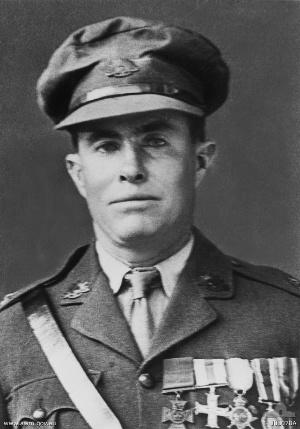
Edgar Thomas Towner,VC,MC was an Australian recipient of the Victoria Cross,the highest decoration for gallantry "in the face of the enemy" that can be awarded to members of the British and Commonwealth armed forces. A lieutenant in the Australian Imperial Force during the First World War,Towner was awarded the Victoria Cross for his actions on 1 September 1918,during an attack on Mont St. Quentin on the Western Front.

Walter Peeler,was an Australian recipient of the Victoria Cross,the highest award for gallantry "in the face of the enemy" that can be awarded to members of the British and Commonwealth armed forces. He was decorated following his actions during the Battle of Broodseinde in October 1917. Then a lance corporal in the Australian Imperial Force,he repeatedly took the lead in the 37th Battalion's advance on well-defended German positions,destroying four machine gun posts and killing more than 30 German soldiers during the battle.

Percy Clyde Statton,was an Australian farmer,soldier,and a recipient of the Victoria Cross,the highest decoration for gallantry "in the face of the enemy" that can be awarded to members of the British and Commonwealth armed forces. Serving as a sergeant during the First World War,Statton was awarded the Victoria Cross in 1918 following his assault on four German machine guns. With three men,Statton rushed the posts armed with only a revolver and succeeded in capturing the first gun. Moving to the second,he killed the crew of five himself before the two remaining gun crews were forced to retreat.

Percy Valentine Storkey,VC was a New Zealand-born Australian recipient of the Victoria Cross (VC),the highest award for gallantry in the face of the enemy that can be awarded to British and Commonwealth forces.

Robert Cuthbert Grieve,VC was an Australian recipient of the Victoria Cross,the highest award for gallantry "in the face of the enemy" that can be awarded to British and Commonwealth forces.

George Morby Ingram,VC,MM was an Australian recipient of the Victoria Cross,the highest decoration for gallantry "in the face of the enemy" that can be awarded to members of the British and Commonwealth armed forces. Ingram became Australia's final recipient of the Victoria Cross during the First World War following his actions during an attack on the village of Montbrehain in France. Leading a platoon during the engagement,he instigated several charges against a number of German strong points that eventuated in the seizure of ten machine guns and sixty-two prisoners,as well as inflicting high casualties.

John Leak,VC was an Australian recipient of the Victoria Cross,the highest award for gallantry in battle that could be awarded at that time to a member of the Australian armed forces. Leak enlisted in the Australian Imperial Force in early 1915,and served with the 9th Battalion in the Gallipoli Campaign during the First World War. Evacuated suffering from dysentery,Leak rejoined his battalion after it had been withdrawn to Egypt. Along with his unit,he transferred to the Western Front in France and Belgium,where he participated in the Battle of Pozières in July 1916. He was awarded the Victoria Cross for his actions during the battle. The following month he was seriously wounded in the Battle of Mouquet Farm.
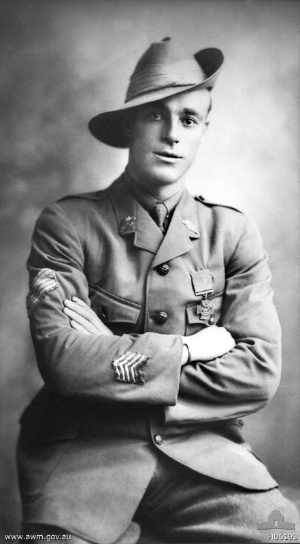
Reginald Roy Inwood,VC was an Australian soldier and recipient of the Victoria Cross,the highest award for gallantry in battle that could be awarded to a member of the Australian armed forces at the time. Inwood enlisted in the Australian Imperial Force in August 1914,and along with the rest of the 10th Battalion,he landed at Anzac Cove,Gallipoli,on 25 April 1915. He fought at Anzac until being evacuated sick to Egypt in September. He remained there until he rejoined his unit on the Western Front in June 1916. In August,he fought in the Battle of Mouquet Farm.

Claud Charles Castleton,VC was an Australian recipient of the Victoria Cross,the highest award for gallantry in the face of the enemy that can be awarded to British and Commonwealth forces.
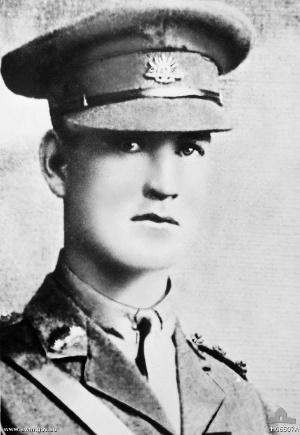
Percy Herbert Cherry,VC,MC was an Australian recipient of the Victoria Cross,the highest decoration for gallantry "in the face of the enemy" that can be awarded to members of the British and Commonwealth armed forces. The award was granted posthumously for Cherry's actions during an attack on the French village of Lagnicourt which was strongly defended by German forces.
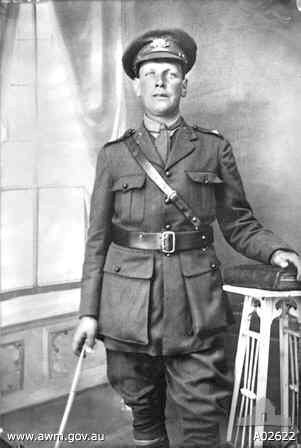
Alfred Edward Gaby,VC was an Australian recipient of the Victoria Cross,the highest award for gallantry in the face of the enemy that can be awarded to British and Commonwealth forces.

Lewis McGee,VC was an Australian recipient of the Victoria Cross,the highest decoration for gallantry "in the face of the enemy" that can be awarded to members of the British and Commonwealth armed forces. As a sergeant in the Australian Imperial Force,McGee was awarded the Victoria Cross for his actions in the Battle of Broodseinde—part of the Passchendaele offensive—on 4 October 1917. As his platoon came under heavy machine gun fire from a German pillbox,McGee rushed alone across open ground towards the emplacement. Armed solely with a revolver,he shot the gunners and captured the garrison. He then organised a bombing party,and led the group in the seizure of a second machine gun post.

Stanley Robert McDougall,was an Australian recipient of the Victoria Cross,the highest award given to British and Commonwealth forces for gallantry in the face of the enemy.
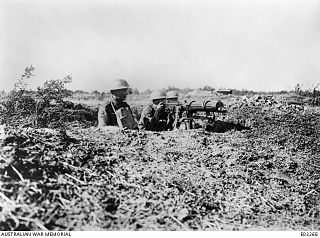
The Australian Machine Gun Corps was a corps of the Australian Army which was formed for service during World War I. It was established in early 1916 as part of a reorganisation of the Australian Imperial Force (AIF) in Egypt as preparations were made to transfer the bulk of the AIF's infantry divisions to Europe to take part in the fighting on the Western Front. Initially,the corps was established into company or squadron sized elements,with a total of 20 companies being raised for service in Europe and four squadrons for service with the Australian Light Horse in the Middle East. In early 1918,the companies deployed to the Western Front were reorganised into five battalions,which were each assigned to an infantry division for defensive and offensive duties. These units were disbanded in mid-1919 following the end of hostilities.

The 4th Machine Gun Battalion was an infantry support unit of the Australian Army. Originally formed in March 1918 for service during World War I as part of the all volunteer Australian Imperial Force,it was one of five such units raised as part of the AIF during the war. The battalion consisted of four machine gun companies,which had previously existed as independent companies assigned mainly at brigade level. The battalion took part in the final stages of the war,seeing action during the Allied defensive operations during the German spring offensive and then the Allied Hundred Days Offensive,which finally brought an end to the war. The battalion was disbanded in mid-1919 during the demobilisation of the AIF following the conclusion of hostilities.















